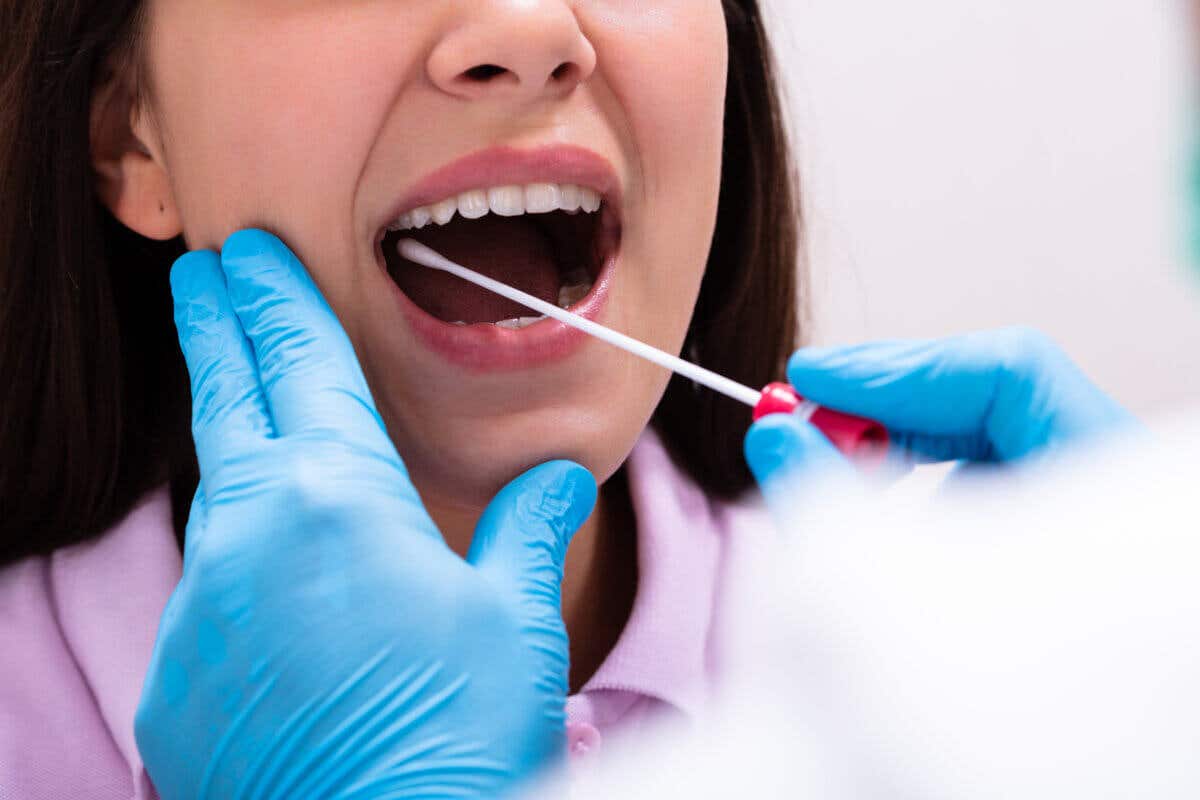Simple cheek swab test can accurately predict your risk of dying
CheekAge, a new epigenetic clock using cheek cells, can predict mortality risk with impressive accuracy, offering insights into biological aging and potential health outcomes.

The rate at which people age varies significantly. While some individuals reach advanced ages like supercentenarians largely due to genetics, many lifestyle choices and behaviors can speed up aging. Stress, poor sleep, poor nutrition, smoking, and alcohol are some well-known factors.
These environmental effects leave a mark on our DNA through a process known as epigenetics, allowing scientists to measure biological aging by examining the epigenome at key sites within our genetic code.
In the past decade, scientists have developed various "epigenetic clocks" to track biological aging. These clocks are designed to compare an individual's molecular age to their chronological age by examining DNA methylation across numerous genomic sites.
Most of these clocks rely on blood samples, making the collection process more cumbersome and potentially stressful for individuals. However, a new approach called CheekAge, developed earlier this year by scientists in the United States, uses methylation data from cells inside the cheek, making the process easier and less invasive.
Researchers recently published a study in Frontiers in Aging demonstrating that CheekAge can accurately predict the risk of death—even when using epigenetic data from tissue other than cheek cells. The study represents an important advancement in understanding how epigenetic markers can reflect biological aging and predict health outcomes.
“We also demonstrate that specific methylation sites are especially important for this correlation, revealing potential links between specific genes and processes and human mortality captured by our clock,” said Dr. Maxim Shokhirev, the lead author of the study and Head of Computational Biology and Data Science at Tally Health.
Predicting Mortality with CheekAge
The development of CheekAge involved training the clock by analyzing approximately 200,000 DNA methylation sites, correlating the data with a score that reflected health and lifestyle factors. This score represents an individual's rate of physiological aging, beyond just their years lived.
Related Stories
In this study, Dr. Shokhirev and his colleagues assessed CheekAge’s accuracy in predicting mortality using data from the Lothian Birth Cohorts (LBC), a program led by the University of Edinburgh. This program involved tracking the health and cognitive aging of 1,513 participants, born in 1921 and 1936, throughout their lives.
Data was collected on numerous factors, including lifestyle, psychosocial information, genetics, epigenetics, and brain imaging. Every three years, the methylation patterns in the blood cells of these participants were analyzed at roughly 450,000 DNA sites.
The researchers used the most recent methylation data to calculate CheekAge for each participant and examined the association between this score and their risk of death, utilizing data from the Scottish National Health Service Central Register.
According to the authors, “[Our results show that] CheekAge is significantly associated with mortality in a longitudinal dataset and outcompetes first-generation clocks trained in datasets containing blood data.”
Specifically, the results indicated that for each single standard deviation increase in CheekAge, there was a 21% increase in the risk of all-cause mortality. This correlation shows that CheekAge is a strong predictor of mortality risk, particularly among older adults.
Dr. Shokhirev noted, “The fact that our epigenetic clock trained on cheek cells predicts mortality when measuring the methylome in blood cells suggests there are common mortality signals across tissues.”
He continued, “This implies that a simple, non-invasive cheek swab can be a valuable alternative for studying and tracking the biology of aging.”
Identifying Key Genes
The researchers also identified specific DNA methylation sites that are particularly significant for predicting mortality. Genes located around these sites are potential contributors to lifespan and the risk of age-related diseases. Among the notable genes are PDZRN4, which may act as a tumor suppressor, and ALPK2, which has been linked to cancer and cardiovascular health in animal studies. Additionally, other implicated genes have associations with cancer, osteoporosis, inflammation, and metabolic syndrome.
Dr. Adiv Johnson, co-author of the study and Head of Scientific Affairs and Education at Tally Health, highlighted the importance of future research: “It would be intriguing to determine if genes like ALPK2 impact lifespan or health in animal models.”
He added, “Future studies are also needed to identify what other associations besides all-cause mortality can be captured with CheekAge. For example, other possible associations might include the incidence of various age-related diseases or the duration of ‘healthspan’, the period of healthy life free of age-related chronic disease and disability.”
Moving Toward Practical Applications
The implications of these findings are significant, especially given the simplicity of using cheek cells for analysis. Many previous biological aging clocks required blood samples, which can be inconvenient and intimidating for individuals. By using a non-invasive cheek swab, CheekAge offers a more practical option for assessing biological age and monitoring health over time.
The potential to predict not only the risk of death but also the onset of age-related diseases and other health outcomes makes CheekAge a powerful tool in the emerging field of personalized health monitoring. If further studies confirm these findings, this approach could help in developing preventative strategies to improve overall health and extend the period of life spent in good health, known as the "healthspan."
The CheekAge clock also provides a window into understanding the genetic and epigenetic factors that play a role in aging. By identifying genes like ALPK2 and PDZRN4, scientists may uncover new therapeutic targets to combat aging-related health problems, ultimately contributing to extending not just lifespan but the quality of life during those years.
CheekAge represents an innovative step forward in the study of biological aging. Its non-invasive approach and the insights it offers into both genetic markers of aging and mortality risk make it a promising tool for future research and public health. With further investigation, CheekAge could help shift the focus from merely treating age-related diseases to predicting and preventing them, ultimately improving the quality of life for an aging population.
Note: Materials provided above by The Brighter Side of News. Content may be edited for style and length.
Like these kind of feel good stories? Get The Brighter Side of News' newsletter.
Joshua Shavit
Science & Technology Writer | AI and Robotics Reporter
Joshua Shavit is a Los Angeles-based science and technology writer with a passion for exploring the breakthroughs shaping the future. As a contributor to The Brighter Side of News, he focuses on positive and transformative advancements in AI, technology, physics, engineering, robotics and space science. Joshua is currently working towards a Bachelor of Science in Business Administration at the University of California, Berkeley. He combines his academic background with a talent for storytelling, making complex scientific discoveries engaging and accessible. His work highlights the innovators behind the ideas, bringing readers closer to the people driving progress.



